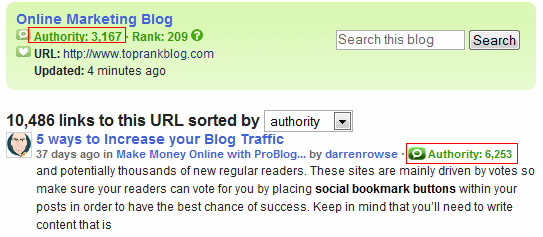 Many of the B2B companies that publish corporate blogs have long realized the value of publishing useful content in the form of white papers, case studies, webinars, newsletters and other types of educational content.
Many of the B2B companies that publish corporate blogs have long realized the value of publishing useful content in the form of white papers, case studies, webinars, newsletters and other types of educational content.
Business buyers typically seek additional information and resources for information on business products and services. In the growing content marketing field, some companies choose a pure creation strategy (often using blogging platforms for publishing) and find it to be a challenge.
Within the field of content marketing, content curation blends a mix of new content with the filtering and management of useful information streams from blogs and other RSS resources. The curation of useful content for B2B marketing serves as a productive and manageable solution for providing prospective customers a steady stream of useful information from trusted sources. Â Pure content creation is demanding. Pure automation of content aggregation doesn’t foster interaction. For B2B marketers, content curation provides the best of both worlds.
To make more sense out of the notion of content curation, here are some useful thought leader definitions of the topic and insight into where curation might fit within a digital marketing program:
Joe Pulizzi – Founder Junta42 and Content Marketing Institute, Co-Author of Get Content, Get Customers.
Content curation is editing on steroids.
As more content floods through all aspects of the web (as well as print and online), we’ll need more brands stepping up to make sense of what we really should be paying attention to. Content curation is as important in the content marketing toolbox as is creation. We need both…and curation doesn’t work without creation (much like Google trying to save the newspapers because they need great news to survive, but that is for another story). For some brands, curation may be enough. You can’t find the resources to develop the most valuable, most compelling content in your industry? Then just tap into your network that does, and package that content to present you as the trusted industry leader. It’s still a needed service, just a bit different from creation.
Where it will go, no one knows…but I’ve heard from smarter people than me that content curation is the future (even present) of media. I’d rather say curation and creation go together like Macaroni & Cheese…a splendid combination.
Pawan Deshpande – CEO, HiveFire, Makers of Curata
Content curation is the cure for a broken content marketing strategy. Content marketing is about a brand producing valuable content, and prospects being educated with that content. It’s valuable, it works and it’s not going away.
But the only problem is that day by day, it’s less effective as everyone produces more and more content. Brands are increasingly competing to get their content noticed. At the same time, prospects are increasingly spending more time searching for relevant content.
Content curation has emerged as a new and powerful way for marketers to seamlessly sift through the flood of content available to prospects. Like the owner of a high-end art gallery, you have to sift through the information from across the web and “curate†it to ensure that it is relevant to the customer. You will be navigating your prospects through this sea of content by leading them to the most relevant important information.
It’s already happened in the consumer world: Sites like Digg (social curation) which have little or no original content have become key resources for information. Similarly we are seeing leading businesses take a similar approach to become the experts for their respective areas.
Paul Gillin – Consultant and Author of The New Influencers and Secrets of Social Media Marketing
I define content curation as the process of assembling, summarizing and categorizing and interpreting information from multiple sources in a context that is relevant to a particular audience. I think this discipline will be absolutely essential to content marketing in the future because of changes in the media landscape.
Marketers can build trust with their constituencies by providing focused curation in areas that matter to their constituents. Original content will always have value, but curation is coming to have nearly equal value.  The key is to stake out unique topic areas and to become the most trusted source in those areas. You don’t need a lot of money to do this. You just need to know the subject matter very well.
So it seems that not only do companies need to enter the world of publishing, but undertake the role of digital librarian as well. I cannot imagine the need for original blogging going away anytime soon. But I can see blogging complemented and even facilitated by the incorporation of curated feeds (excerpts) from other blogs and information sources. Citation and links benefit the sources and the collection of useful information benefits the readers. Â Satisfied readers can turn into interested prospects and satisfied customers.

 Blogs serve many purposes for companies and individuals alike. As easy to use content management systems, blog software enables companies that are “
Blogs serve many purposes for companies and individuals alike. As easy to use content management systems, blog software enables companies that are “









